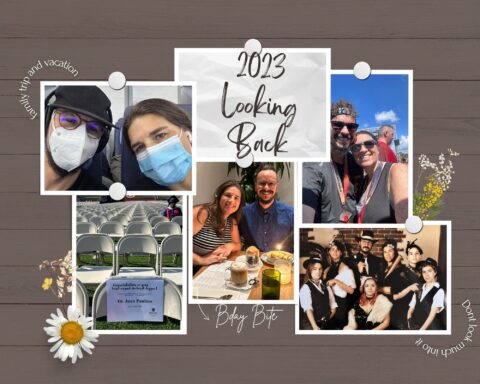Option 2: Explain and identify communication processes as they occur in marriage. Identify and discuss how marital rules link with marital communication, conflict, and marital functioning. Discuss how you would assess marital rules and their relationship to communication and conflict. Consider how to help a premarital couple who are not open and honest with each other about their thoughts and feelings out of fear of hurting the other or looking weak.
(The following post is a 800+ words paper I needed to submit for my doctoral work in marriage and family therapy at Liberty University)
When researching for marital communication it was not easy finding peer-reviewed scholarly work on this topic exclusively. It usually appears in close relationship with marital satisfaction and/or marital problem-solving skills (Lavner, Karney & Bradbury, 2016). The same can be said about books. My research encounter results ranged from “The 5 Love Languages” (Chapman, 2010) addressing communication styles (not processes or levels) to Gottman’s work on types of couples by how they do conflict resolution (Gottman, 1999).
From our course reading material the closest one I found was from the Prepare/Enrich Workbook (Olson, 2017) which stipulates 10 skills to “increase intimacy” via communication: giving full attention to partner when talking; focus on the good qualities; be assertive; avoid criticism; if one must criticize keep a 1:1 negative to positive balance; listen to understand, not to judge; use active listening; avoid blaming; use “The Ten Steps” P/E approach; and seek counseling (Olson, 2017, p.9). Although these 10 skills are useful in general terms, they lack the simplicity and sequential factor I seek to provide my clients when coaching/counseling.
With this in mind, the most useful pattern of communication levels in marriage come courtesy of the website marriage.com, and their Five Levels of Communication: Saying commonly-used phrases; communicating fact-based requests; stating opinions or ideas, either fact or feeling based; sharing emotion-based feelings; and voicing and listening to each other’s needs (Smith, 2020). In order to remember these levels I use the mnemonic CFOEV (Common courtesy/Facts exchange/Opinions/Emotional connection/Voicing aka active listening).
The combination of poor performance at either of these levels and/or the absence of any of them could pose relational problems for the couple. In my experience I usually see a lack of the fourth and fifth level (Emotional connection and Voicing/active listening) or a poor performance in these departments. This is not to say a lack or poor performance in the first three levels will not cause tension, it will; however not strong enough to seek out counseling. It usually gets reduced to the level of annoyances or “that’s just how he/she is”, but when a partner in a committed relationship does not feel emotionally connected or heard, we have in our hands what Gottman refers to as “gridlocks” (Gottman, 1999) and the Four Horseman of the relational Apocalypse (Gottman, 1999) which tend to claim permanent residence in the relational space of our couple.
Each partner has his/her own motivations behind establishing a committed romantic relationship with their special one, however regardless of the uniqueness of each individual couple there is an overarching goal and expectation: the assumption that this relationship is life giving. Each partner knows when they are growing, when they are better than before, and when they are progressing. All of these life-descriptive verbs (growing, bettering, progressing) have one thing in common: movement. Movement is fluid, flexible, and continuous. It is movement as the factor that must inform the creation of rules and roles within the relationship. The absence of movement (growth, betterment, progress) would be a strong indicator of communicational deficiencies and gridlocks. When encountering these challenges, a combination of psycho-educational (CFOEV + Gottman Method) paired with active listening exercises in session, is the clinical approach I suggest.
One of the most difficult situations is when there is a lack of involvement and compliance from one of the partners. This is true in both, marital counseling and pre-marital counseling. Sometimes this partner does not attend the sessions, or might attend but not participate, or sometimes would not be honest in order to avoid negative consequences post-session. Out of those three cases, I have found success with the last two.
When working with an uninvolved counseling partner or one that is not open/honest, I have found having individual sessions specifically with that spouse has increased both counseling participation and openness when the couple is brought back together. When a spouse refuses to attend sessions, I lean on two recommendations from the Gottman Institute: a) Try the 5 steps to positively influence your partner to attend (Benson, 2021), b) become a better partner by attending their “Art and Science of Love” workshop. However there are cases in which the refusal is more part of an “exit strategy” and if this is the case, Gottman recommends attending “Discernment Counseling” (Benson, 2020; Doherty, Harris & Wilde, 2015).
A verse that comes to mind when working on the topic of communication with couples is the one from James 1:19 “Know this, my beloved brothers: let every person be quick to hear, slow to speak, slow to get angry.”(New International Version, 1978/2011). Let us walk along side the couples God entrust to our care, and assist them in the mechanics and movement of their communication.
References
Benson, K. (2020). Is it Time to Go to Couples Counseling?. Retrieved 13 June 2021, from https://www.gottman.com/blog/is-it-time-to-go-to-couples-counseling/
Benson, K. (2021). 5 Steps to Inspire Your Partner to Join You in Attending Couples Therapy. Retrieved 13 June 2021, from https://www.gottman.com/blog/5-steps-to-inspire-your-partner-to-join-you-in-attending-couples-therapy/
Chapman, G. D. (2010). The five love languages. Walker Large Print.
Doherty, W., Harris, S., & Wilde, J. (2015). Discernment Counseling for “Mixed‐Agenda” Couples. Journal Of Marital And Family Therapy, 42(2), 246-255. doi: 10.1111/jmft.12132
Gottman, J. M. (1999). The marriage clinic. New York: Norton
Lavner, J., Karney, B., & Bradbury, T. (2016). Does Couples’ Communication Predict Marital Satisfaction, or Does Marital Satisfaction Predict Communication?. Journal Of Marriage And Family, 78(3), 680-694. doi: 10.1111/jomf.12301
New International Version Bible. (2011). Zondervan. (Original work published 1978)
Olson, D. (2017). Prepare/Enrich Workbook. Minneapolis, MN: Life Innovations, Inc.
Smith, S. (2020). Levels Of Communication In Marriage. Retrieved 13 June 2021, from https://www.marriage.com/advice/communication/levels-of-communication-in-marriage/







